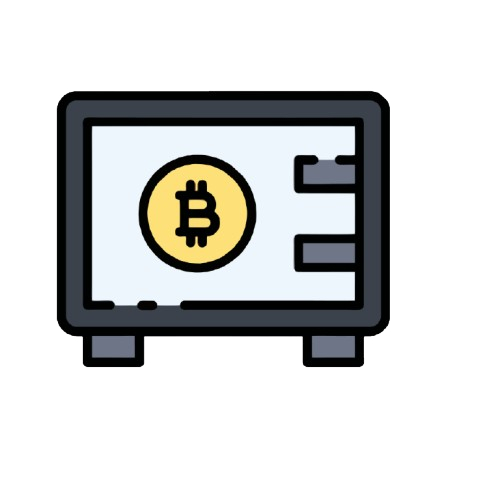
Bitcoin has grown from a niche experiment into one of the most recognised digital assets. By 2025, it is no longer limited to early adopters and tech enthusiasts, everyday investors, businesses, and even institutions now hold it. With wider acceptance comes greater responsibility. As the opportunities increase, so do the risks, with cyber criminals constantly finding new ways to exploit weaknesses.
This makes learning how to secure Bitcoin in 2025 essential. Whether you own a small amount for personal use or manage larger investments, keeping it safe is the key to protecting both your money and your peace of mind.
Why Bitcoin Security Matters More Than Ever in 2025
Bitcoin has come a long way since its early beginnings, developing from a digital experiment to a well-known financial asset. With growing adoption comes added responsibility for those holding it.
At the same time, criminals have become more sophisticated. From scams and malware to social engineering tricks, they continue to search for new ways to steal funds. For anyone holding Bitcoin today, security is not optional, it’s essential.
What Are the Biggest Bitcoin Security Threats in 2025?

The crypto space has seen many high-profile scams and hacks, and 2025 is no different. The most common threats include:
Phishing attacks through fake websites or emails that look like trusted platforms.
Malware that secretly records logins or seed phrases.
SIM swapping, where criminals hijack your phone number to bypass security codes.
Exchange breaches, where large amounts of Bitcoin are stolen from centralised platforms.
Understanding these risks is the first step to protecting yourself.
Should You Use a Hot Wallet or a Cold Wallet?
When storing Bitcoin, there are two main options.
Hot wallets are connected to the internet, making them convenient for quick transactions but more open to online threats. They are best for holding smaller amounts you plan to spend.
Cold wallets stay offline, such as hardware or paper wallets. These are far safer against online attacks, making them ideal for long-term storage of larger amounts.
Many users in 2025 combine both—using hot wallets for spending and cold wallets for saving.
Are Hardware Wallets Still the Safest Choice?
Hardware wallets continue to be one of the most trusted ways to secure Bitcoin. They keep private keys stored inside a physical device, away from online risks. Regularly updating firmware and only buying from trusted sellers are key to staying safe.
A growing alternative is multi-signature wallets, which need approval from more than one private key to make a transaction. This greatly reduces the chance of one single failure and is especially useful for businesses or high-value holders.
How Can You Strengthen Your Bitcoin Account Security?
Even with secure wallets, account protection remains crucial. In 2025, good practices include using long, unique passphrases instead of short passwords, enabling two-factor authentication (2FA) through an app or hardware key rather than SMS, and adding biometric checks such as fingerprints or facial recognition where possible. These additional layers of security make it significantly harder for criminals to gain unauthorized access to accounts.
The Safest Way to Store Your Seed Phrase
Your seed phrase is the master key to your Bitcoin, and if someone else gains access to it, your funds can be lost forever. To keep it safe, store it offline on paper or metal plates and keep it in a secure location such as a safe or deposit box. Never store your seed phrase in the cloud, on email, or on a computer. Minimising digital exposure ensures it remains as secure as possible.
The Most Common Bitcoin Security Mistakes
Even experienced holders sometimes make avoidable errors. The biggest ones are:
Leaving Bitcoin on exchanges.
Sharing or storing private keys carelessly.
Clicking on suspicious links or scam offers.
Forgetting to update wallet software or firmware.
Staying cautious and double-checking unusual requests helps avoid these traps.
Your Quick 2025 Bitcoin Safety Checklist
To manage cryptocurrency securely, use both hot and cold wallets for different purposes, protecting accounts with strong passphrases and app-based two-factor authentication (2FA). Keep seed phrases offline in a safe, durable format, and ensure wallet software and device firmware are updated regularly. Additionally, stay vigilant for scams and suspicious offers to maintain the safety of your digital assets.
What Does the Future of Bitcoin Security Look Like?

Security methods will continue to improve. In 2025, AI-powered tools are helping to detect suspicious activity, blockchain verification are making fraud harder, and exchanges are facing stronger rules to protect customers.
This means the system is getting safer overall, but individuals still need to protect their own funds. The good news is that new tools are becoming easier to use, so even non-technical people can keep their Bitcoin secure.
Final Thoughts
Bitcoin is now a mainstream asset, but responsibility for safety lies with each individual. Criminals are getting smarter, which means caution is key. By using a mix of secure wallets, strong account protection, and safe storage practices, you can hold your Bitcoin with confidence in 2025 and beyond.